#The Andersonville Trials
Text
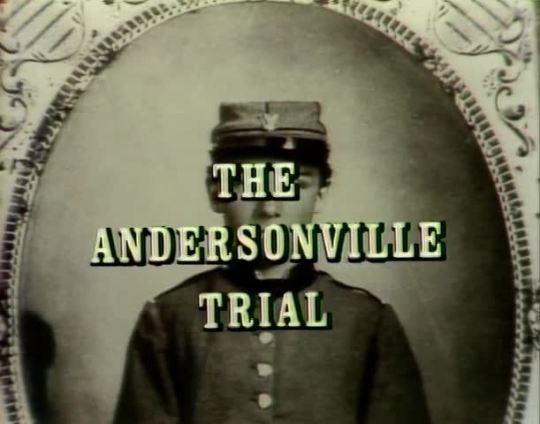

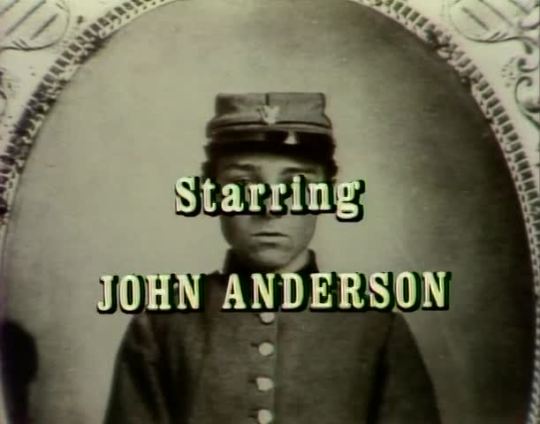

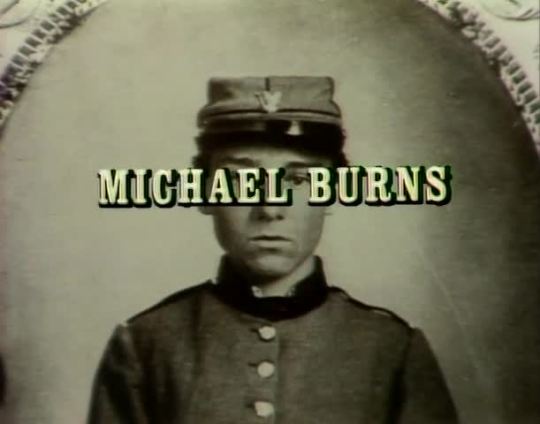

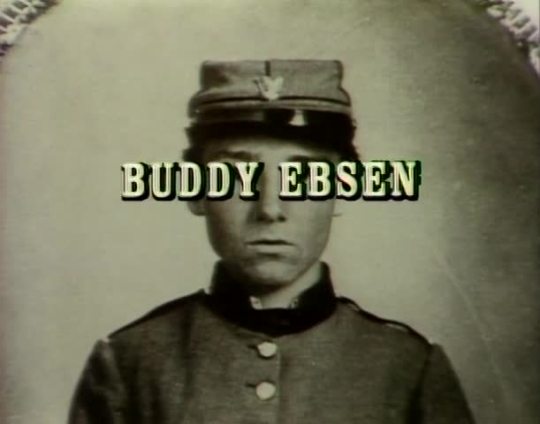
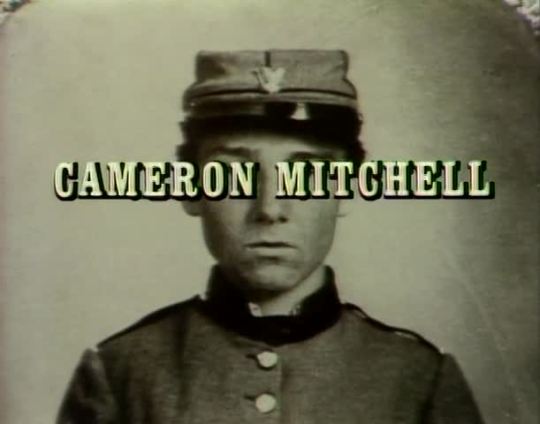

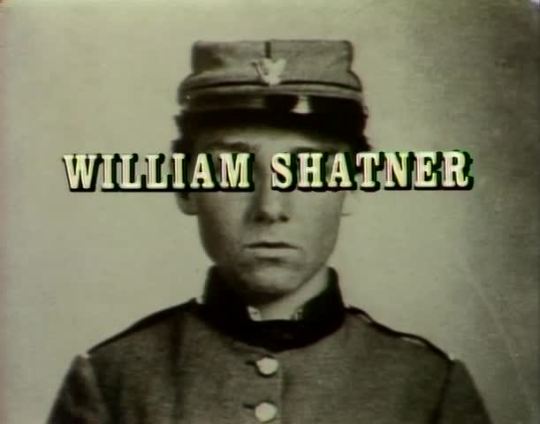



The Andersonville Trial - NET (PBS) - May 17, 1970
Court Drama
Running Time: 150 minutes
Stars:
William Shatner as Lt. Col. Norton P. Chipman
Cameron Mitchell as Maj. Gen. Lew Wallace
Richard Basehart as Capt. Henry Wirz
Jack Cassidy as Otis Baker
Martin Sheen as Capt. Williams
Buddy Ebsen as Dr. John Bates
Albert Salmi as James Gray
John Anderson as Ambrose Spencer
Michael Burns as James Davidson
Woodrow Parfrey as Louis Schade
Harry Townes as Col. Chandler
Whit Bissell as Dr. Ford
Alan Hale, Jr. as court-martial board member John W. Geary
Ian Wolfe as court-martial board member Gershom Mott
Ford Rainey as court-martial board member Lorenzo Thomas
Philip Bourneuf as court-martial board member John Ballier
Bert Freed as court-martial board member Francis Fessenden
Charles McGraw as court-martial board member T. Alcock
Kenneth Tobey as court martial board member John Stibbs
Dallas McKennon as First Guard
Lou Frizzell as Jasper Culver
Robert Easton as Court Reporter
Wright King as Major Hosmer
William Wright as The Lieutenant
Ray Stricklyn as Court Clerk
#The Andersonville Trials#TV#Drama#NET#1970#1970's#William Shatner#Cameron Mitchell#Richard Basehart#Jack Cassidy
4 notes
·
View notes
Note
Oh thank goodness a blog that does Civil War stuff! (Thank you for this so much)
I'm interested in your thoughts on the Wirz controversy, with Andersonville and the trial and all that. I'm as far from pro-confed as it gets, but I think Henry Wirz really got the short stick in terms of things.
Oh wow, this one is complicated.
For those not already aware, Henry Wirz was a Swiss immigrant who was eventually put in command of the Confederate prison camp Andersonville. The camp and its commander gained notoriety for the brutal treatment and harsh conditions that awaited captured Union soldiers.
After the war, Wirz was captured and brought back to Washington DC for trial. He was charged with conspiracy and numerous counts of personal cruelty. He was sentenced to death, and was hanged on November 10th, 1865.
Before I get into what I think, I'm going to link to two very good articles from the National Parks Service:
Captain Henry Wirz
Myth: Henry Wirz was the only person tried for war crimes in the Civil War
Part of the bleak conditions at Andersonville had to do with the fact that late in the war, the Confederacy was painfully short on supplies, and wasn't willing to share much with their captured enemies. With that being said, I personally believe that Wirz bears his share of responsibility for the deaths that occurred on his watch.
It's important to note that Wirz cut his prison running teeth in the American slavery system as a plantation overseer. I think that goes a long way towards explaining his behavior and the threats and fear that he used to keep prisoners under control. Without getting into the ethically of the death penalty, I don't really have much sympathy for the guy. He was a bad man who did bad things and thrived in a system where those were seen as positive attributes.
Wirz has since become a Confederate martyr figure nobly serving the Lost Cause. A monument to his memory was erected in Andersonville in 1909, just as a wave of white nationalism was sweeping the nation. A lot of other Confederate monuments would go up in the next decade. I think that this is the mail element of the "controversy" since the facts of the matter seem relatively clear. Should Wirz have been deemed solely responsible for the misery of Andersonville? Probably not, but he deserves his fair share of the blame.
-Reid
19 notes
·
View notes
Text
Attempt the “I was just following orders” defense?
How’d that work at the Nuremberg or at the Andersonville trials?
https://apple.news/AoP-k9jCKTRKscKY3MDZeFQ
0 notes
Text
One more Authoritarian Fascist whining that they only tried to destroy what was good and decent because they “were just following orders!”
That ‘defense’ didn’t work at the Nuremberg Trials because the US set the precedent at the Andersonville Trial.
0 notes
Photo

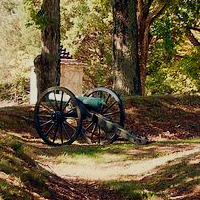


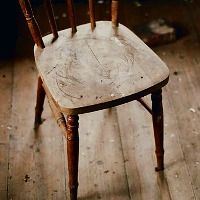

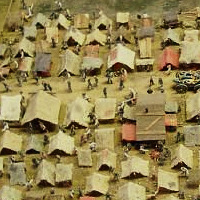

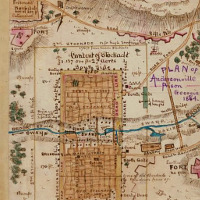
endless list of favorites:
THE ANDERSONVILLE TRIAL (1970)
I could not disobey.
#filmedit#perioddramaedit#vintageedit#The Andersonville Trial#films#american civil war#1800s#1970s#*mine#my heart is pierced by queuepid
11 notes
·
View notes
Text
JACK CASSIDY
March 5, 1927

John Joseph Edward Cassidy, known as "Jack" was born in Richmond Hill, Queens, and became an actor and singer known for his work in the theatre, television and films.
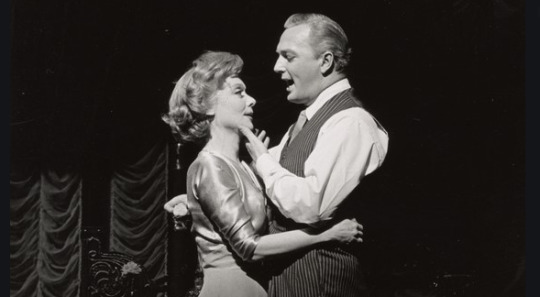
He received multiple Tony Award nominations and a win as well as a Grammy Award for his work on the Broadway production of the 1964 musical She Loves Me. His career on Broadway began in 1943 at the Alvin Theatre, the same venue that later hosted Lucille Ball in Wildcat. He was also Tony nominated for Fade Out - Fade In (1965) starring Carol Burnett and Maggie Flynn (1968) with his second wife, Shirley Jones.
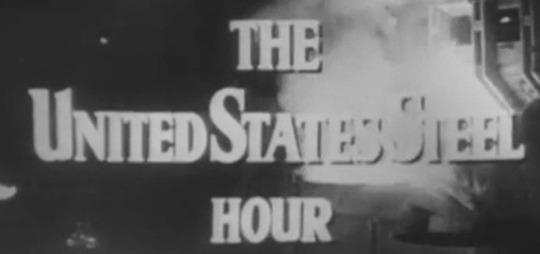
He made his television debut in August 1952 on “All-Star Summer Revue,” a summer edition of “All-Star Revue” aka “Four Star Revue”. His acting debut on TV came in “Shadow of Evil” a February 1957 episode of the “United States Steel Hour.” He co-starred with his new wife, Shirley Jones.
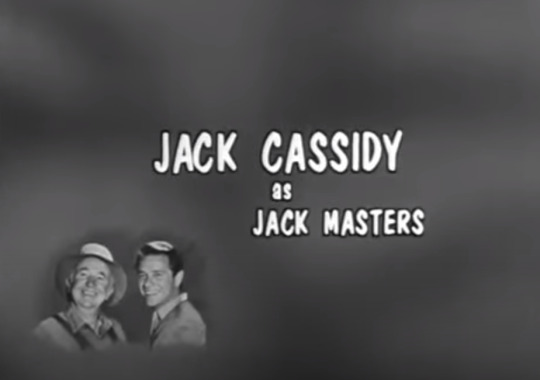
In October 1962, he guest-starred on Desilu’s “The Real McCoys” as Jack Masters in “The Roofing Salesman” co-starring Doris Singleton.
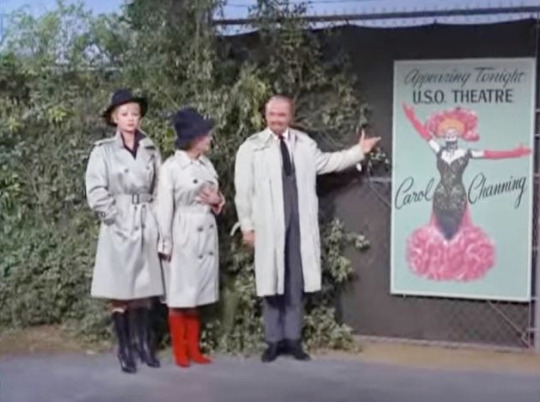
He returned to Desilu for “Lucy and the Undercover Agent” (TLS S4;E10) aired on November 22, 1965.
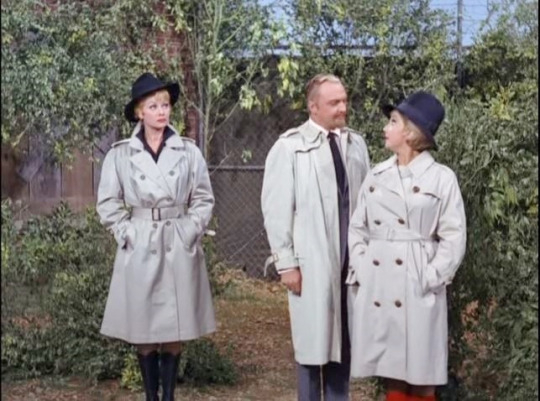
Cassidy played Professor Zoorkin in an episode that that was appropriately Broadway-themed, with Lucy dressed as Carol Channing from Hello, Dolly! Coincidentally, Cassidy’s next two TV acting roles were on “I Spy” and “The Girl From U.N.C.L.E”, both in 1967.

In September 1967, he was cast as an egotistical actor playing a TV superhero named Jetman in “He & She” starring Paula Prentiss and Richard Benjamin (who were husband and wife in real life as well). Coincidentally, Cassidy had been in Superman on Broadway the year before. Although he did not play the man of steel, he earned another Tony nomination. “He & She” only lasted one season on CBS. It was his only time as a series regular and as usual, it earned him a Primetime Emmy Award nomination.
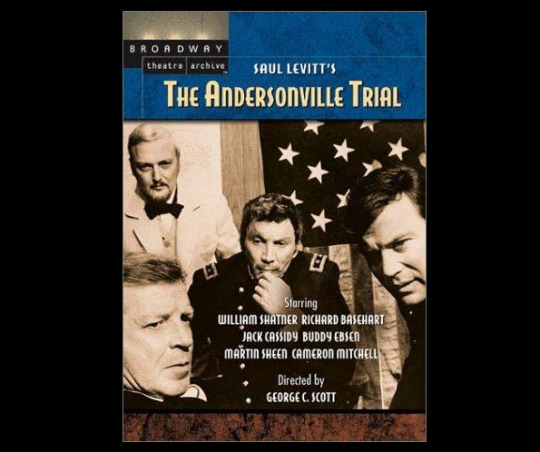
He earned a second Emmy nomination for “The Andersonville Trial” in 1970.

The role of Ted Baxter on “The Mary Tyler Moore Show” (1970–1977) was reportedly written with Cassidy in mind, but he turned down the role, feeling that it was not right for him; the part went to Ted Knight. Cassidy later appeared as a guest star in a 1971 episode as Ted's brother Hal.

Cassidy’s final screen role was playing Broadway writer Damon Runyon in The Private Files of J. Edgar Hoover, which premiered posthumously in 1977.
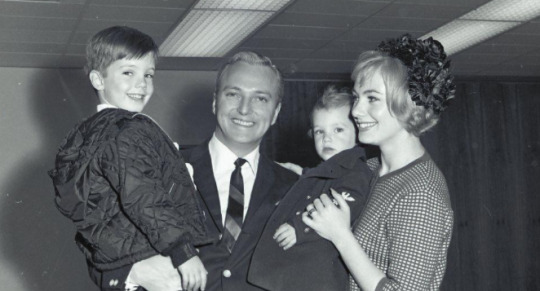
He was the father of teen idols David Cassidy and Shaun Cassidy. David was the son of Cassidy’s first wife, Evelyn Ward. In addition to Shaun, Jones and Cassidy also had two more sons, Patrick and Ryan.
In the last years of his life, Cassidy suffered from bipolar disorder and alcoholism. In her 2013 memoir, Shirley Jones wrote that Cassidy had many same-sex affairs, including one with Cole Porter. In the early morning hours of December 12, 1976, Cassidy lit a cigarette and fell asleep, igniting the couch. The flames spread throughout the apartment and building. Cassidy's remains were later scattered into the Pacific Ocean. He was 49 years old.
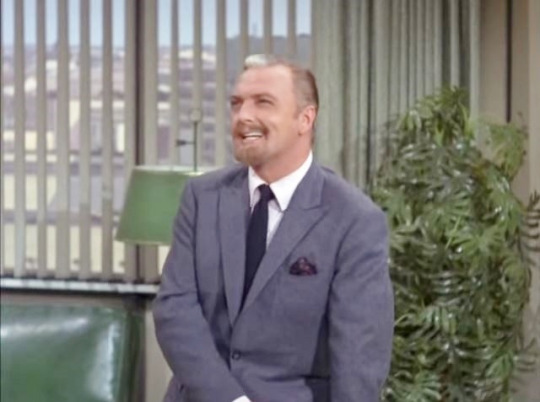
#Jack Cassidy#Shirley Jones#Lucille Ball#Ann Sothern#The Lucy Show#Hello Dolly#Broadway#She Loves Me#He & She#TV#Tony Awards#Emmy Awards
4 notes
·
View notes
Text
Cool Things to Use in Family History Research
I decided to put together a reference list of some lists and databases online, partly for my own reference. These won’t help you discover anyone, usually, but if you have a name and want to test a theory or just check for the hell of it, these are fun - just make sure you do all your research because some names are more common than you might think.
I’ll be adding to this as I find more things. They aren’t in any order, just the order I find and add them in.
Searchable Things
Valley Forge Muster Rolls
Old Bailey Online - “containing 197,745 criminal trials held at London's central criminal court” from 1674-1913
Price Genealogy’s Immigrant Servants Database - a database of American indentured servants
Three Decks - “the premier web resource for researching naval history during the Age of Sail” (where I learned about my 8th great-grandfather’s privateer ships)
Black Sheep Ancestors - American, Canadian, UK, and International criminal and court search engines (be careful which search bars you use because they have ads on the site, which I by no means fault them for, but I don’t want anyone to end up in the wrong spot)
The National Archives database of Passengers who Arrived at the Port of New York During the Irish Famine 1/12/1846-12/31/1851
Whaling History Data - searchable databases of whaling, mainly from the 19th century, that includes info on ships, the voyages (ports, beginning and ending dates, what the ship brought back), and crews - includes American, British, French, and Scottish records - many American records include crew lists, others only masters or masters and mates
USS Constitution Crew Archive - names and ranks of those who served on the USS Constitution, especially during the War of 1812
SlaveVoyages.org - I am someone who is very much in support of knowing the full truth of your history, including the unpleasant details, especially if you are of European descent. On this site are databases of the Trans-Atlantic (going back to 1514) and Intra-American (back to 1550) slave trade voyages, including the names of the ship captains. There is also an African Names database with information about the slaves transported, though it only begins in 1808.
Civil War Prisoners - a searchable database of soldiers held at Fort McHenry and Andersonville
Faces of the 54th - searchable database of soldiers and officers of the 54th Massachusetts Volunteer Infantry, one of the first black regiments to fight in the Civil War
Lists
American Participants in the Battle of Saratoga
Mayflower Passenger List
Gateway Ancestors*: The Order of the Crown of Charlemagne
Gateway Ancestors*: Baronial Order of the Magna Carta
Gateway Ancestors*: Military Order of the Crusades
Gateway Ancestors*: Plantagenet Society
Victims of the Salem Witch Trials
American Prisoners of the Revolution: Names of 8000 men - “carelessly kept” list of the prisoners on board the prison ships in Wallabout Bay
United Empire Loyalists’ Association of Canada database - names of thousands of people who were Loyalists during the American Revolutionary period who relocated to Canada
King’s Daughters - a list of the French women who went to Canada to be wives in the mid-1600s, known as the Filles du roi, or king’s daughters, as it was a government program
Carignan-Salières Regiment Officers and Soldiers who settled in Canada - soldiers of the Carignan-Salières Regiment that went to Canada in 1665 to “protect citizens from Native Americans” (as difficult as it may be for people, this is a very important heritage to NOT ignore) - broken into multiple lists: soldiers who settled in Canada, regimental companies sent to Canada, the ships that transported them, unconfirmed soldiers, soldiers who married Filles du roi, soldiers who married other than Filles du roi, soldiers who didn’t marry but settled in Canada
The Filles à Marier and their Spouses 1634-1662 - before the Filles du roi came the filles à marier, or the marriageable girls, part of a privately-backed program to find wives for men in Canada who otherwise would return to France to marry due to the “shortage of marriageable women” in Canada at the time - this list may be harder to read as it is formatted in paragraphs instead of as a bulleted list or table
Acadian.org - this site has great information on the French-Canadian people of Acadia, in the Nova Scotia area, who were forced to relocate after refusing to swear an oath of allegiance to England in 1755 - the website includes information on the families impacted
*A gateway ancestor is an immigrant ancestor whose line is confirmed to go back to royalty or nobility.
53 notes
·
View notes
Photo
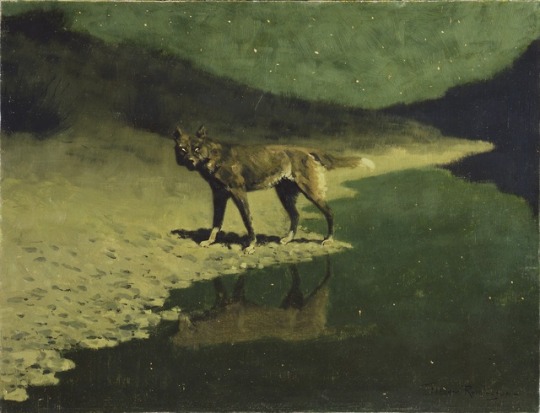
Witchy Wolves of Omer Plains
Author Linda Godfrey, known for her work on the Beast of Bray Road, an upright wolfman-like creature sighted in Wisconsin, recently published a book called I Know What I Saw: Modern-Day Encounters With Monsters Of New Urban Legend And Ancient Lore. In this book, in chapter 4, she describes the witchy wolves of Omer Plains, Michigan.
She describes how, in folklore, witches and wolves have largely been associated together. This is largely due to the fact that logic, specifically during the witch trials in Europe, stated that shapeshifting was only possible through witchcraft.
In the 1860s, the settlers that began to cluster in the area that became known as Omer, called it Rifle River Mills, but a sawmill owner changed it to Homer to honor a local trading post owner. However, there was another area in Michigan that was being referred to as Homer so they just dropped the H and it has henceforth been known as Omer. Though there were never any witch trials in this area, it has long been the site of “phantom lupine creatures” referred to as the witchy wolves. According to Lindsey Russell for Michigan’s Otherside, the stories started as an old Chippewa legend about a half-dog-half-wolf spirit said to protect the souls and graves of native warriors and attack anyone who disturbs that final resting place. This legend has led to several decades of sightings by local residents. Interestingly, some believe that the sightings are simply rare glimpses of a recovering gray wolf population after the creature was said to be eradicated in Michigan’s lower peninsula in 1935.
An early account of a suspected encounter with the witchy wolves came from an undated newspaper article titled “The Witch Wolves of Omer” sent to Linda Godfrey that described a family named Keeney who settled near a cemetery in a scrubby area near a cemetery called Omer Plains, just a few miles upriver from Omer proper around the time of the Civil War. Godfrey was able to locate records of a contemporary family with the same name and other names that were included in the article, though it is impossible to corroborate if the people named in the article and the people confirmed to have lived in the area at the time are the same or that they had the same experiences.
The story that is recounted in the article describes how the family’s son, Corwin, was killed in 1865 in the POW camp Andersonville (link to another Creepy Americana post) in Georgia. It wasn’t until 30 years later, in 1895, that Corwin’s remains were finally sent back to his family in a shoebox-sized container. The family placed the container inside a full-length coffin and buried that coffin in the nearby cemetery. In May of the following year, after the harsh winter had finally let up, some citizens of Omer started their yearly ritual of tending to the cemetery, they went to pay special attention to their local Civil War hero. However, they found that the grave had been dug up and in its place was a female wolf with several pups. Upon seeing the villagers, the wolf sprang forth and began snarling and snatching at them. They took defensive poses and then saw that there were more wolves coming out from the forest, likely pack mates of the female wolf come to her aid at the sound of the commotion. The citizens then beat a hasty retreat back to town. Sounds relatively normal, but as legends are wont to do, the more the story was told the more it was embellished with villagers claiming that the wolf was no “ordinary” she-wolf but in fact anything from a vampire to a “witchy wolf.”
This legend was very well-known around town with teenagers telling other teenagers to scare each other, to the point that pilgrimages to the Omer Plains Cemetery to try to catch a glimpse of the witchy wolves. The writer, David Kulczyk grew up about 20 miles south of Omer and was in high school in the 70s. He says that he and his friends made the trip a few times to the area, though they never got the courage to leave the car. They also never saw anything, but the witchy wolves were “not silent.” According to Kulczyk, he and his friends heard the “hideous, high-pitched laughing bark” ringing from all around them in the darkness of the forest. And, as urban legends go, Kulczyk also said he knew a few people who had left their vehicles out in the woods which led to their cars being scratched or dented and getting bodily knocked to the ground by something growling and unseen.
It is interesting to see what legends remain and how they transmogrify over the years.
Painting is Moonlight, Wolf by Frederic Remington
#witchy wolves of omer plains#witchy wolves#witchie wolves#wolves#werewolves#upright canids#bipedal canids#dogmen#wolfmen#linda godfrey#i know what i saw#I Know What I Saw: Modern-Day Encounters With Monsters Of New Urban Legend And Ancient Lore#lindsey russell#michigan's otherside#civil war#michigan#america
17 notes
·
View notes
Text
International lawyer in İstanbul firm
International lawyer

International lawyer in İstanbul supra note 19, at para. 31: ‘The Court must also recall that the Convention is a living instrument which, as the Commission rightly stressed, must be interpreted in the light of present-day conditions. In the case now before it the Court cannot but be influenced by the developments and commonly accepted standards in the penal policy of the member States of the Council of Europe in this field.’
Until the mid-19th century, relations between states were dictated mostly by treaties, agreements between states to behave in a certain way, unenforceable except by force, and nonbinding except as matters of honor and faithfulness. One of the first instruments of modern international law was the Lieber Code of 1863, which governed the conduct of U.S. forces during the U.S. Civil War, and is considered to be the first written recitation of the rules and articles of war adhered to by all civilized nations. This led to the first prosecution for war crimes, in which a Confederate commandant was tried and hanged for holding prisoners of war in cruel and depraved conditions at Andersonville, Georgia. In the years that followed, other states subscribed to limitations of their conduct, and numerous other treaties and bodies were created to regulate the conduct of states towards one another, including the Permanent Court of Arbitration in 1899, and the Hague and Geneva Conventions, the first of which was passed in 1864.
In theory all states are sovereign and equal. As a result of the notion of sovereignty, the value and authority of international law is dependent upon the voluntary participation of states in its formulation, observance, and enforcement. Although there may be exceptions, it is thought by many international academics that most states enter into legal commitments with other states out of enlightened self-interest rather than adherence to a body of law that is higher than their own. International lawyer in İstanbul, "international law cannot exist in isolation from the political factors operating in the sphere of international relations".[31]
Hans Morgenthau believed international law to be the weakest and most primitive system of law enforcement; he likened its decentralised nature to the law that prevails in preliterate tribal societies. Monopoly on violence is what makes domestic law enforceable; but between nations, there are multiple competing sources of force. The confusion created by treaty laws, which resemble private contracts between persons, is mitigated only by the relatively small number of states.[60] For example, it is unclear whether the Nuremberg trials created new law, or applied the existing law of the Kellogg-Briand pact.
101So as to avoid a widespread misunderstanding of this abstract claim, I should stress that it differs from the banal claim – very popular outside analytic legal philosophy – that interpreters are routinely influenced by their biases, prejudices, ideology etc. One should not confuse the normative question of what reasons apply to one's actions with the empirical question of what motivates someone to act in a particular way.
¨C11CThe reader of Golder may not, at first glance, realize what a bold and revolutionary approach to interpretation the above line of reasoning was. The Court not only rejected the view, defended by the United Kingdom, that lack of an explicit provision in the ¨C15C a reason against granting an unenumerated right. It also stressed that the question whether to grant an unenumerated right is not a question whether we should stick to the actual text or read words into the text. For the majority of judges in Golder did not think they added the right of access to court to Article 6 ECHR. They insisted that by recognizing the right to access to court they followed an interpretation based on ‘the very terms’ of the first sentence of Article 6 and did not force any new obligations on the Contracting States. We may summarize the Court's line of reasoning as follows:
0 notes
Text

Richard Basehart as Capt. Henry Wirz, Jack Cassidy as Otis Baker, Cameron Mitchell as Maj. Gen. Lew Wallace and William Shatner as Lt. Col. Norton P. Chipman in "The Andersonville Trial"
4 notes
·
View notes
Text
2017 Reading
262 books read. 60% of new reads Non-fiction, authors from 55 unique countries, 35% of authors read from countries other than USA, UK, Canada, and Australia. Asterisks denote re-reads, bolds are favorites.
January:
The Deeds of the Disturber – Elizabeth Peters
The Wiregrass – Pam Webber
Homegoing – Yaa Gyasi
It Didn't Start With You – Mark Wolynn
Facing the Lion – Joseph Lemasolai Lekuton
Before We Visit the Goddess – Chitra Divakaruni
Colored People – Henry Louis Gates Jr.
My Khyber Marriage – Morag Murray Abdullah
Miss Bianca in the Salt Mines – Margery Sharp
Farewell to the East End – Jennifer Worth
Fire and Air – Erik Vlaminck
My Grandfather Would Have Shot Me – Jennifer Teege
Catherine the Great – Robert K Massie
My Mother's Sabbath Days – Chaim Grade
Not the Israel My Parents Promised Me – Harvey Pekar, JT Waldman
The Readers of Broken Wheel Recommend – Katarina Bivald
Stammered Songbook – Erwin Mortier
Savushun – Simin Daneshvar
The Prophet – Kahlil Gibran
Beyond the Walls – Nazim Hikmet
The Dressmaker of Khair Khana – Gayle Tzemach Lemmon
A Day No Pigs Would Die – Robert Newton Peck *
February:
Bone Black – bell hooks
Special Exits – Joyce Farmer
Reading Like a Writer – Francine Prose
Bright Dead Things – Ada Limon
Middlemarch – George Eliot
Confessions of an English Opium Eater – Thomas de Quincey
Medusa's Gaze – Marina Belozerskaya
Child of the Prophecy – Juliet Marillier *
The File on H – Ismail Kadare
The Motorcycle Diaries – Ernesto Che Guevara
Passing – Nella Larsen
Whose Body? - Dorothy L. Sayers
The Spiral Staircase – Karen Armstrong
Station Eleven – Emily St. John Mandel
Reading Lolita in Tehran – Azar Nafisi
Defiance – Nechama Tec
March:
Yes, Chef – Marcus Samuelsson
Discontent and its Civilizations – Mohsin Hamid
The Gulag Archipelago Vol. 1 – Aleksandr Solzhenitsyn
Patience and Sarah – Isabel Miller
Dying Light in Corduba – Lindsey Davis *
Five Days at Memorial – Sheri Fink
A Man Called Ove – Fredrik Backman *
The Shia Revival – Vali Nasr
Girt – David Hunt
Half Magic – Edward Eager *
Dreams of Joy – Lisa See *
Too Pretty to Live – Dennis Brooks
West with the Night – Beryl Markham
Little Fuzzy – H. Beam Piper *
April:
Defying Hitler – Sebastian Haffner
Monsters in Appalachia – Sheryl Monks
Sorcerer to the Crown – Zen Cho
The Man Without a Face – Masha Gessen
Peace is Every Step – Thich Nhat Hanh
Flory – Flory van Beek
Why Soccer Matters – Pele
The Zhivago Affair – Peter Finn, Petra Couvee
The Stories of Breece D'J Pancake – Breece Pancake
The Hundred-Year-Old Man Who Climbed Out the Window and Disappeared – Jonas Jonasson
Chasing Utopia – Nikki Giovanni
The Invisible Bridge – Julie Orringer *
Young Adults – Daniel Pinkwater
Jonathan Swift: The Reluctant Rebel – John Stubbs
Black Gun, Silver Star – Art T. Burton
The Arab of the Future 2 – Riad Sattouf
Hole in the Heart – Henny Beaumont
MASH – Richard Hooker
Forgotten Ally – Rana Mitter
Zorro – Isabel Allende
Flying Couch – Amy Kurzweil
May:
The Bite of the Mango – Mariatu Kamara
Mystic and Rider – Sharon Shinn *
Freedom is a Constant Struggle – Angela Davis
Capture – David A. Kessler
Poor Cow – Nell Dunn
My Father's Dragon – Ruth Stiles Gannett *
Elmer and the Dragon – Ruth Stiles Gannett *
The Dragons of Blueland – Ruth Stiles Gannett *
Hetty Feather – Jacqueline Wilson
In the Shadow of the Banyan – Vaddey Ratner
The Last Camel Died at Noon – Elizabeth Peters
Cannibalism – Bill Schutt
The Handmaid's Tale – Margaret Atwood
A Fine Balance – Rohinton Mistry
The Food of a Younger Land – Mark Kurlansky
Behold the Dreamers – Imbolo Mbue
Words on the Move – John McWhorter
John Ransom's Diary: Andersonville – John Ransom
Such a Lovely Little War – Marcelino Truong
Child of All Nations – Irmgard Keun
One Child – Mei Fong
Country of Red Azaleas – Domnica Radulescu
Between Two Worlds – Zainab Salbi
Malinche – Julia Esquivel
A Lucky Child – Thomas Buergenthal
The Drackenberg Adventure – Lloyd Alexander
Say You're One of Them – Uwem Akpan
William Wells Brown – Ezra Greenspan
June:
Partners In Crime – Agatha Christie
The Chinese in America – Iris Chang
The Great Escape – Kati Marton
As Texas Goes... – Gail Collins
Pavilion of Women – Pearl S. Buck
Classic Chinese Stories – Lu Xun
The Return of the Soldier – Rebecca West
The Slave Across the Street – Theresa Flores
Miss Bianca in the Orient – Margery Sharp
Boy Erased – Garrard Conley
How to Be a Dictator – Mikal Hem
A Thousand Splendid Suns – Khaled Hosseini
Tears of the Desert – Halima Bashir
The Death and Life of Great American Cities – Jane Jacobs
The First Salute – Barbara Tuchman
Come as You Are – Emily Nagoski
The Want-Ad Killer – Ann Rule
The Gulag Archipelago Vol 2 – Aleksandr Solzhenitsyn
July:
Dorothy and the Wizard in Oz – L. Frank Baum *
The Blazing World – Margaret Cavendish
Madonna in a Fur Coat – Sabahattin Ali
Duende – tracy k. smith
The ACB With Honora Lee – Kate de Goldi
Mountains of the Pharaohs – Zahi Hawass
Anna Karenina – Leo Tolstoy
Chronicle of a Last Summer – Yasmine el Rashidi
Killers of the Flower Moon – David Grann
Mister Monday – Garth Nix *
Leaving Yuba City – Chitra Banerjee Divakaruni
The Silk Roads – Peter Frankopan
The Hitchhiker's Guide to the Galaxy – Douglas Adams
A Corner of White – Jaclyn Moriarty *
Circling the Sun – Paula McLain
Lies and the Lying Liars Who Tell Them – Al Franken
Believe Me – Eddie Izzard
The Cracks in the Kingdom – Jaclyn Moriarty *
Fried Green Tomatoes at the Whistle Stop Cafe – Fannie Flagg *
One Hundred and One Days – Asne Seierstad
Grim Tuesday – Garth Nix *
The Vanishing Velasquez – Laura Cumming
Four Against the Arctic – David Roberts
The Marriage Bureau – Penrose Halson
The Jesuit and the Skull – Amir D Aczel
Drowned Wednesday – Garth Nix *
Roots, Radicals, and Rockers – Billy Bragg
A Tangle of Gold – Jaclyn Moriarty *
Lydia, Queen of Palestine – Uri Orlev *
August:
Sir Thursday – Garth Nix *
The Hoboken Chicken Emergency – Daniel Pinkwater *
Lady Friday – Garth Nix *
Freddy and the Perilous Adventure – Walter R. Brooks *
Venice – Jan Morris
China's Long March – Jean Fritz
Trials of the Earth – Mary Mann Hamilton
The Bully Pulpit – Doris Kearns Goodwin
Final Exit – Derek Humphry
The Book of Emma Reyes – Emma Reyes
Freddy the Politician – Walter R. Brooks *
Dragonflight – Anne McCaffrey *
What the Witch Left – Ruth Chew
All Passion Spent – Vita Sackville-West
The Picture of Dorian Gray – Oscar Wilde
The Curse of the Blue Figurine – John Bellairs *
When They Severed Earth From Sky – Elizabeth Wayland Barber
Superior Saturday – Garth Nix *
The Boston Girl – Anita Diamant
The Mummy, The Will, and the Crypt – John Bellairs *
Are We Smart Enough to Know How Smart Animals Are? - Frans de Waal
The Philadelphia Adventure – Lloyd Alexander *
Lord Sunday – Garth Nix *
The Spell of the Sorcerer's Skull – John Bellairs *
Five Little Pigs – Agatha Christie *
Love in Vain – JM Dupont, Mezzo
A Little History of the World – EH Gombrich
Last Things – Marissa Moss
Imagine Wanting Only This – Kristen Radtke
Dinosaur Empire – Abby Howard
The Amazing Maurice and his Educated Rodents – Terry Pratchett *
September:
First Bite by Bee Wilson
The Xanadu Adventure by Lloyd Alexander
Orientalism – Edward Said
The Lost Crown of Genghis Khan – Carl Barks
The Island on Bird Street – Uri Orlev *
The Indifferent Stars Above – Daniel James Brown
Beneath the Lion's Gaze – Maaza Mengiste
The Importance of Being Earnest – Oscar Wilde *
The Book of Five Rings – Miyamoto Musashi
The Drunken Botanist – Amy Stewart
The Turtle of Oman – Naomi Shahib Nye
The Alleluia Files – Sharon Shinn *
Gut Feelings – Gerd Gigerenzer
The Secret of Hondorica – Carl Barks
Don't Let's Go to the Dogs Tonight – Alexandra Fuller
The Abominable Mr. Seabrook – Joe Ollmann
Black Flags – Joby Warrick
October:
Fear – Thich Nhat Hanh
Fall Down 7 Times Get Up 8 – Naoki Higashida
To the Bright Edge of the World – Eowyn Ivey
Why? - Mario Livio
Just One Damned Thing After Another – Jodi Taylor
The Yellow Wallpaper – Charlotte Perkins Gilman
Blindness – Jose Saramago
The Book Thieves – Anders Rydell
Reality is not What it Seems – Carlo Rovelli
Cranford – Elizabeth Gaskell *
The Witch Family – Eleanor Estes *
Sister Mine – Nalo Hopkinson
La Vagabonde – Colette
Becoming Nicole – Amy Ellis Nutt
November:
The Golden Notebook – Doris Lessing
The Children's Book – A.S. Byatt
The Fire Next Time – James Baldwin
Under the Udala Trees – Chinelo Okparanta
Who Killed These Girls? – Beverly Lowry
Running for my Life – Lopez Lmong
Radium Girls – Kate Moore
News of the World – Paulette Jiles
The Red Pony – John Steinbeck
The Edible History of Humanity – Tom Standage
A Woman in Arabia – Gertrude Bell and Georgina Howell
Founding Gardeners – Andrea Wulf
Anatomy of a Disapperance – Hisham Matar
The Book of Night Women – Marlon James
Ground Zero – Kevin J. Anderson *
Acorna – Anne McCaffrey and Margaret Ball *
A Girl Named Zippy – Haven Kimmel *
The Age of the Vikings – Anders Winroth
The Spanish Civil War: A Very Short Introduction – Helen Graham
A General History of the Pyrates – Captain Charles Johnson (suspected Nathaniel Mist)
Clouds of Witness – Dorothy L. Sayers *
The Lonely City – Olivia Laing
No Time for Tears – Judy Heath
December:
The Unwomanly Face of War – Svetlana Alexievich
Gay-Neck - Dhan Gopal Mukerji
The Tea Girl of Hummingbird Lane – Lisa See
Get Well Soon – Jennifer Wright
The Testament of Mary – Colm Toibin
The Roman Way – Edith Hamilton
Understood Betsy – Dorothy Canfield Fisher *
The Four Horsemen of the Apocalypse - Vicente Blasco Ibanez
Mrs. Frisby and the Rats of NIMH – Robert C. O'Brien
SPQR – Mary Beard
Ballet Shoes – Noel Streatfeild *
Hogfather – Terry Pratchett *
The Sorrow of War – Bao Ninh
Drowned Hopes – Donald E. Westlake *
Selected Essays – Michel de Montaigne
Vietnam – Stanley Karnow
The Snake, The Crocodile, and the Dog – Elizabeth Peters
Guests of the Sheik – Elizabetha Warnok Fernea
Stone Butch Blues – Leslie Feinberg
Wicked Plants – Amy Stewart
Life in a Medieval City – Joseph and Frances Gies
Under the Sea Wind – Rachel Carson
The Red Virgin and the Vision of Utopia – Mary and Brian Talbot
Brat Farrar – Josephine Tey *
The Treasure of the Ten Avatars – Don Rosa
Escape From Forbidden Valley – Don Rosa
Nightwood – Djuna Barnes
Here Comes the Sun – Nicole Dennis-Benn
Over My Dead Body – Rex Stout *
8 notes
·
View notes
Text
Background Remove Service in Georgia
Bulk Background Removal Service provider
Georgia is a beautiful place to with lots of color and view. People from there often love to do photography. Are you also one of them? If you are, I have some good news for you, we are offer bulk background remove service. In this post you are going to know some golden rules about Photo related business.
Photo is intensively connected with all sorts of business. It is a crying need for the advertisement of your business. Photo is the main key thing when you are running an e-commerce business. You need to be extra careful about it than before. If you are willing for expanding your business, there is no way without it.
Considering this you can apply background remove technique. In this process, one can remove background of image. This is generally done by Photoshop that’s why people sometimes call it as remove background in Photoshop. You can also perform the process via gimp. But using Photoshop is the better way to approach in this case.
Do you want to edit your image professionally by professional image editor? ClippingUSA will be the perfect option at this case. You can background remove service in Georgia from ClippingUSA.

Background remove service Georgia
CUSA is specialist in removing background from photo. Want to have a checkout? Let’s have a try our trial service. You can ask for editing two images at a time for trial. This is totally free. No commitment is needed.
I think you shouldn’t make delay to place a trial. You can also ask for a quote directly. We will contact with you in less than one hour.
Let see in which city we are providing our service: Abbeville, Acworth, Adairsville, Adel, Adrian, Ailey, Alamo, Albany, Alma, Alpharetta, Ambrose, Americus, Andersonville, Aragon, Arcade, Arlington, Arnolds Ville, Ashburn, Atlanta, Attapulgus, Auburn, Austell, Avera, Avondale Estates, and Baconton
We are also available on Bainbridge, Baldwin, Ball Ground, Unadilla, Union City, Union Point, Uvalde, Valdosta, Varnell, Vidalia, Vidette, Vienna, Villa Rica, Waco, Wadley, Waleska, Walthourville, Warm Springs, Warner Robins, Warrenton, Warwick, Washington, Watkinsville, Waycross, Waynesboro, Whigham, White, White Plains, Willacoochee, Winder, Winterville, Woodbine, Woodland, Woodstock, Woodville, Wrens, Wrightsville, Young Harris, Zebulon.
If you are not belongs to those cites or you are from different states, this is not a matter of concern. You can still afford our services readers. Background Remove service in Georgia
You may also like:
Background Remove Service In New Jersey
Background Remove Service In California
The post Background Remove Service in Georgia appeared first on Clipping path service, Remove background from image-CLIPPING USA.
0 notes
Text
Today in ‘all elected Republicans are human piles of dung.’
We need to convene a ‘crimes against humanity’ tribunal. Prosecute these Nazis.
There’s precedence in the Andersonville Trial after the Civil War.
2 notes
·
View notes
Text
Here Lies America: An Interview With Jason Cochran
Posted: 01/27/2020 | January 27th, 2020
In 2010, I decided to spend the summer in NYC. I was two years into blogging and was making enough where I could afford a few months here. Still new to the industry, NYC was where all the legends of writing lived and I wanted to start making connections with my peers.
It was that summer I met Jason Cochran, a guidebook writer from Frommers, editor, and the man I would consider my mentor.
Though we never had any formal mentor/mentee relationship, Jason’s writing philosophy, advice, and feedback, especially on my first book, How to Travel the World on $50 a Day, has been instrumental in shaping me as a writer. Much of his philosophy has become mine and I don’t think I would have grown to where I am without him.
Last year, he finally published the book he’d been working on about tourism in America, called Here Lies America. (We featured it on our best books of 2019 list).
Today, we’re going to go behind the scenes of the book and talk to Jason on what does lie in America!
Nomadic Matt: Tell everyone about yourself.
Jason Cochran: I’ve been a travel writer for longer than I’ve felt like an adult. In the mid-‘90s, I kept a very early form of a travel blog on a two-year backpacking trip around the world. That blog became a career. I’ve written for more publications than I can count, including for a prime-time game show.
These days I’m the Editor-in-Chief of Frommers.com, where I also write two of its annual guidebooks, and I co-host a weekly radio show with Pauline Frommer on WABC. For me, history is always my way into a new place. In many ways, time is a form of travel, and understanding the past flexes a lot of the same intellectual muscles as understanding cultural differences.
So I have come to call myself a travel writer and a pop historian. That last term is something I just made up. Dan Rather made fun of me once for it. “Whatever that is,” he said. But it seems to fit. I like uncovering everyday history in ways that are funny, revealing, and casual, the way Bill Bryson and Sarah Vowell do.
What made you want to write this book?
Before I began researching, I just thought it would be funny. You know, sarcastic and ironic, about Americans going to graveyards and places of suffering just to buy lots of tacky souvenirs, eat ice cream, and wear dumb t-shirts. And, that’s still in there, for sure. We’re Americans and we like those things. Key chains will happen.
But that changed fast. For one, that would have become a very tired joke. It wouldn’t carry for three hundred pages. Things clicked for me early on, on the first of several cross-country research drives I took. I went to a place that I wasn’t taught about at school, and it clicked. I was at Andersonville in rural Georgia, where 13,000 out of 45,000 Civil War prisoners died in just 14 months. It was flat-out a concentration camp.
Yes, it turns out that concentration camps are as American as apple pie. The man who ran it was the only Confederate officer who was executed after the war. Southerners feared the victors would hang their leaders by the dozen, but that vengeance never materialized. Not for Jefferson Davis, not for Robert E. Lee—the guy who ran this camp poorly got the only public hanging. And he wasn’t even a born American. He was Swiss!
But that’s how important this place was at the time. Yet most of us have never even heard of it, except for a really bad low-budget movie on TNT in the ‘90s in which all the characters bellowed inspirational monologues as if they thought they were remaking Hoosiers.
So just getting my head around the full insanity of Andersonville’s existence was a big light bulb—our history is constantly undergoing whitewashing. Americans are always willfully trying to forget how violent and awful we can be to each other.
And Andersonville wasn’t even the only concentration camp in that war. There were a bunch in both the North and the South, and most of them had survival rates that were just as dismal. So that was another light bulb: There’s a story in why our society decided to preserve Andersonville but forget about a place like Chicago’s Camp Douglas, which was really just as nasty, except now it’s a high-rise housing project and there’s a Taco Bell and a frozen custard place where its gate once stood.
And did you know that the remains of 12,000 people from another Revolutionary War concentration camp are in a forgotten grave smack in the middle of Brooklyn? We think our major historic sites are sacred and that they are the pillars of our proud American story, but actually, how accurate can our sites be if they’re not even fairly chosen?
What was one of the most surprising things you learned from your research?
In almost no instance was a plaque, statue, or sign placed right after the historic event in question. Most of the monuments were actually installed many decades after the event. In the case of the Civil War, most of the memorials were erected in a boom that came a half-century after the last bullet was fired.
If you really get close to the plaques and read past the poetic inscriptions, it quickly becomes clear that our most beloved historic sites aren’t sanctified with artifacts but with propaganda placed there by people who weren’t even witnesses to the event. There was a vast network of women’s clubs that would help you order a statue for your own town out of a catalog, and they commissioned European sculptors who cashed the checks but privately grumbled about the poor taste of the tacky kitsch they were installing all over America.
We’re still dealing with what they did today. It’s what Charlottesville was about. But most people don’t realize these statues weren’t put there anywhere near the time of the war, or that they were the product of an orchestrated public relations machine. By powerful women!
I wrote a line in the book: “Having a Southern heritage is like having herpes—you can forget you have it, you can deny it, but it inevitably bubbles up and requires attention.” These issues aren’t going away.
Places we think of as holy ground, like Arlington National Cemetery, often have some pretty shocking origin stories. Arlington started because some guy got pissed off at Robert E. Lee and started buying corpses in his rose garden to get back at him! That’s our hallowed national burial ground: a nasty practical joke, like the Burn Book from Mean Girls. Dig a little and you find more revolting secrets, like how the incredible number of people buried under the wrong headstone, or the time the government put the remains of a Vietnam soldier in the Tomb of the Unknowns. They pretty much knew his identity, but Ronald Reagan really wanted a TV photo op. So they sealed all the soldier’s belongings in the coffin with him so that no one would figure it out.
They eventually had to admit they’d lied and gave the soldier’s body back to his mom. But if a thing like that happens in a place like Arlington, can the rest of our supposedly sacred sites be taken at face value at all?
It goes a lot deeper. At Ford’s Theatre and the surrender house at Appomattox, the site we visit isn’t even real. They’re fakes! The original buildings are long gone but visitors are rarely told that. The tale’s moral is what’s valued, not the authenticity.
What can visiting these sites teach us about how we remember our past?
Once you realize that all historic sites have been cultivated by someone who wanted to define your understanding of it, you learn how to use critical thinking as a traveler. All it takes is asking questions. One of the most fun threads in the book kicks off when I go to Oakland, a historic but touristy cemetery in Atlanta. I spot an ignored gravestone that piqued my interest. I’d never heard of the name of the woman: Orelia Key Bell. The info desk didn’t have her listed among the notable graves. She was born around the 1860s, which was a very eventful time in Atlanta.
So I took out my phone and right there on her grave, I Googled her. I researched her whole life so I could appreciate what I was seeing. It turned out she was a major poet of her time. I stood there reading PDFs of her books at her feet. Granted, her stuff was dreary, painfully old-fashioned. I wrote that her style of writing didn’t fall out of fashion so much as it was yanked down and clubbed by Hemingway.
But reading her writing at her grave made me feel wildly connected to the past. We almost never go to old places and look deeper. We usually let things remain dead. We accept what’s on the sign or the plaque as gospel, and I’m telling you, almost nothing ever reaches us in a state of purity.
I figured that if I was going to probe all these strangers, I had to be fair and probe someone I knew. I decided to look into an untimely death in my own family, a great-grandfather who had died in a train wreck in 1909. That was the beginning and the end of the tale in my family: “Your great-great grandfather died in a train wreck up in Toccoa.”
But almost as soon as I started looking deeper, I discovered something truly shocking—he had been murdered. Two young Black men were accused in rural South Carolina for sabotaging his train and killing him. You’d think at least someone in my family would have known this! But no one had ever looked into it before!
Here Lies America follows their trail. Who were these guys? Why would they want to kill him? I went to where their village used to be, I started digging into court documents from their murder trial. Let me tell you, the shockers came flooding. Like, I found they may have killed him because they wanted to protect a sacred old Cherokee burial mound from destruction. There was this crazy, larger-than-life forgotten story happening in my own damn family.
My experience with that poet’s grave has a happy coda. Last week, someone told me that Orelia Key Bell and her companion are now officially part of the guided tour of Oakland. The simple act of looking deeper had revived a forgotten life and put her back on the record. That’s what visiting these sites can do—but you have to look behind the veneer, the way I do with dozens of attractions in my book. This is the essence of travel, isn’t it? Getting to a core understanding of the truth of a place.
A lot of what you wrote showed how whitewashed many of these historical sites are. How do we as travelers dig deeper to get to the real history?
Remember that pretty much everything you see at a historic site or museum was intentionally placed there or left there by someone. Ask yourself why. Ask who. And definitely ask when, because the climate of later years often twists interpretation of the past. It’s basic content analysis, really, which is something we’re really bad at in a consumer society.
Americans have it drilled into them to never question the tropes of our patriotism. If we learned about in grade school, we assume it’s a settled matter, and if you press it, you’re somehow an insurgent. Now, more than any other time in history, it’s easier than ever to call up primary sources about any era you want. If you want to go back to what our society really is, if you want to try to figure out how we wandered into the shattered shambles we’re in today, you have to be honest about the forces that created the image that, until recently, many of us believed we really were.
Do you think Americans have a problem talking about their history? If so, why is that?
There’s a phrase, and I forget who said it—maybe James Baldwin?-but it goes, “Americans are better at thinking with their feelings than about them.” We go by feels, not so much by facts. We do love to cling to a tidy mythology of how free and wonderful our country always was. It reassures us. We probably need it. After all, in America, where we all come from different places, our national self-belief is our main cultural glue. So we can’t resist prettying up the horrible things we do.
But make no mistake: Violence was the foundation of power in the 1800s, and violence is still a foundation of our values and entertainment today. We have yet to come to terms with that. Our way of dealing with violence is usually to convince ourselves it’s noble.
And if we can’t make pain noble, we try to erase it. It’s why the place where McKinley was shot, in Buffalo, lies under a road now. That was intentional so that it would be forgotten by anarchists. McKinley was given no significant pilgrimage spot where he died, but right after that death, his fans paid for a monument by Burnside’s Bridge in Antietam, because as a youth, he once served coffee to soldiers.
That’s the reason: “personally and without orders served hot coffee,” it reads—it’s hilarious. That is our national mythmaking in a nutshell: Don’t pay attention to the place that raises tough questions about imperialism and economic disparity, but put up an expensive tribute to a barista.
What is the main takeaway you’d like readers to take away from your book?
You may not know where you came from as well as you think you do. And we as a society definitely haven’t asked enough questions about who shaped the information we grew up with. Americans are finally ready to hear some truth.
Jason Cochran is the author of Here Lies America: Buried Agendas and Family Secrets at the Tourist Sites Where Bad History Went Down. He’s been a writer since mid-1990s, a commentator on CBS and AOL, and works today as editor-in-chief of Frommers.com and as co-host of the Frommer Travel Show on WABC. Jason was twice awarded “Guide Book of the Year” by the Lowell Thomas Awards and the North American Travel Journalists Association.
Book Your Trip: Logistical Tips and Tricks
Book Your Flight
Find a cheap flight by using Skyscanner or Momondo. They are my two favorite search engines because they search websites and airlines around the globe so you always know no stone is left unturned.
Book Your Accommodation
You can book your hostel with Hostelworld as they have the largest inventory. If you want to stay somewhere other than a hostel, use Booking.com as they consistently return the cheapest rates for guesthouses and cheap hotels.
Don’t Forget Travel Insurance
Travel insurance will protect you against illness, injury, theft, and cancellations. It’s comprehensive protection in case anything goes wrong. I never go on a trip without it as I’ve had to use it many times in the past. I’ve been using World Nomads for ten years. My favorite companies that offer the best service and value are:
World Nomads (for everyone below 70)
Insure My Trip (for those over 70)
Looking for the best companies to save money with?
Check out my resource page for the best companies to use when you travel! I list all the ones I use to save money when I travel – and that will save you time and money too!
The post Here Lies America: An Interview With Jason Cochran appeared first on Nomadic Matt's Travel Site.
from Nomadic Matt's Travel Site https://ift.tt/3aIsY0R
via IFTTT
0 notes
Text
Our 2018 all-Chicago holiday gift guide
Sustenance
1/ Local coffee subscription: Back of the Yards, Dark Matter, or Metric Coffee
Coffee is the social lubricant that wakes you up, keeps you awake—or maybe puts you to sleep. You can drink it hot in winter to stay warm! But drink good, fresh coffee. Chicago is home to many fine craft coffee roasters, and may offer subscriptions for a steady supply. Metric Coffee offers espresso ($20) and blend ($20) subscriptions as well as a Roasters Choice Subscription ($22) and Single Origin Subscription ($24) each with two different eight-ounce bags in every weekly or monthly delivery. Dark Matter Coffee offers three, six, and twelve-month subscriptions to their monthly limited blends for $20 per month—with discounts for longer subscriptions. Back of the Yards Coffee Co.'s Coffee Club subscriptions page is currently under construction. Hopefully that will be available again soon. In the meantime, they do sell their espresso and 47th Street Blend medium-dark roast coffee in twelve-ounce bags ($15.99), with one dollar from every 47th Street Blend going to their Social Impact fund to benefit the neighborhood.—John Dunlevy Prices vary at backoftheyardscoffee.com, darkmattercoffee.com, and metriccoffee.com.
2/ Coffee maker Nº3 by Manual.is
Manual's newest coffee maker is four usages in one: pour over, French press, cold brew, and a pitcher. It can keep its liquids hot for about an hour in the double-wall insulated design. With this elegant, hand-blown borosilicate glass vessel, even a person who doesn't drink coffee regularly (me) will savor the ritual of making, and serving coffee. —Sue Kwong $140 at Manual Shop & Studio, 3251½ W. Bryn Mawr, 312-870-0799, manual.is.
3/ Mushroom tree ornaments by Facture Goods
The handcrafted mushroom Christmas ornaments come in earthy brown clay glazed in gray and flecked with 22-karat gold. They typically sell out in minutes when creator Aron Fischer puts a fresh batch in his online shop. But on November 24 you can find them at Martha Mae in Andersonville during Small Business Saturday. The mushrooms come in enoki, morel, shiitake, and straw varietals. Plus, while you're there, you can snag plenty more gifts for loved ones in Jean Cate's magical shop. —Maya Dukmasova $18 each or $60 for a set of four at facturegoods.com and on November 24 only at Martha Mae, 5407 N. Clark, 872-806-0988, marthamae.info.
4/ Malort soy candle
Everyone's favorite drink in candle form. —Vince Cerasani $30 at reuse-first.com.
5/ Tellicherry Black Whole Peppercorns from Reluctant Trading Experiment
Pretty amazing pepper from an outfit started by Scott Eirinberg, the entrepreneur who founded, and later sold, The Land of Nod. —Suggested by Kate Schmidt, written by Reader staff Starting at $6.50 at reluctanttrading.com.
Self Care
1/ Houseplant from Foyer
This little plant and stationary store opened in Andersonville a few months ago. It's run by a tremendously helpful and non-judgmental Alma Vescovi, who wants you to get past your fear of killing houseplants. The stock is refreshed weekly and she carries hard-to-find varietals like pilea, monstera, and satin pothos alongside all kinds of succulents and cacti. There are also vintage planters and pots as well as ones made by local artists. If things don't go well with your new plant friend, you can always bring it back for a check-up with Vescovi. She once helped me resuscitate a delicate plumosa fern. It's doing great. Plants are the gift that keeps on giving.—Maya Dukmasova Starting at $8 at 1480 W. Berwyn, 713-994-0302, foyer.shop.
2/ Sound wave art, Soundwaves by Mordecai
Kathleen Mordecai turns sound waves from parts of songs or special moments (for example Pat Hughes saying "Chicago Cubs win the World Series" or children's laughter, as pictured) into sculptures she handcrafts using reclaimed wood. Whether you're shopping for someone who lives in a tiny studio, or in a mansion with plenty of wall space to fill, there's likely an option that will fit; the current selection of sculptures in her online shop runs from 12 inches to 4 feet. Mordecai also takes custom orders, and for those who want to be able to hear the sound while enjoying the visuals, she offers an option for audio playback. —Jamie Ludwig Starting at $76 at etsy.com/soundwavesbyMordecai.
3/ Soap Distillery
The brand tagline for Soap Distillery may promise "Small batches. No hangovers," but no such claim can be made about whether these boozy body care miracles are addictive. Because they are, friends. A bottle of the Beer + Cigarettes hand and body wash disappeared so quickly from my bathroom that I'm not entirely convinced my partner wasn't drinking it. Perfect for the person on your list who always smells so damn good. —Karen Hawkins Prices vary at soapdistillery.com. Catch up with founder Danielle Martin at a holiday shopping event or click here for a list of retailers.
4/ King Spa & Sauna
King Spa & Sauna, the Korean spa in Niles, does not fulfil the glossy magazine ideal of the spa day. There are no fluffy white robes, no soothing music or nice-smelling oils and lotions. Instead, there's a series of saunas, each filled with a different substance that will relieve you of a different source of stress, each more baroque than the last: amethyst geodes, living crystals, 350-million-year-old salt rocks, a 23-karat gold pyramid. The admission fee gets a person access to all of them, plus the soaking pools, food court, and movie theater. (Massages and other spa treatments are extra.) The spa's open 24 hours, so guests can stay as long as they like. In Korea, entire families go to spas for an easy weekend getaway. Maybe they're onto something? —Aimee Levitt $40 admission at King Spa & Sauna, 809 Civic Center Drive, Niles, 847-972-2540, kingspa.com/chicago. Gift cards available.
5/ Mochimochi Land knitting kits
Forget sweaters and scarves, Mochimochi Land gives you the tools to show off your needle skills by knitting something truly unique: cute miniature characters like tiny burgers or tiny walruses or tiny robots and really any other tiny thing you can dream up. The kits go for $12-$15 and include yarn, stuffing, notions, and patterns—all you need are knitting needles, available separately on the website. Mochimochi Land creator Anna Hrachovec features her knitted friends in stop-motion animated videos and GIFs of everyday life in the mystical, yarn-covered land of her own creation. Hrachovec also used the style in her book, Adventures in Mochimochi Land, which follows the adventures of a talking doughnut and a lovelorn balloon, of course. The online shop offers patterns for larger, equally adorable knitting projects ranging from $5-$8 and, for the less crafty among us, pre-knit gnomes, hedgehogs, zombies, and unicorns for $25 each. —Brianna Wellen Prices vary at mochimochiland.com.
6/ Mano y Metal handmade accessories
These aren't your basic accessories. Mano y Metal offers handmade metal jewelry that spices up any look. Owner Desiree T. Guzman features hand stamped metal rings, cuff bracelets, earrings, necklaces, dog tags and more with empowering sayings engraved on them like "be badass" ("chingona" in Spanish) or "me vale madre" which translates to "I don't give a damn." The online shop even offers options available for customization and a Chicago collection. —Marissa De La Cerda $10 for keychains, $16 for rings, $20-$22 for double finger rings, $16-$28 for bracelets, $17-$58 for necklaces at manoymetal.com.
7/ The WasteShed Art Supplies
Help fuel your loved one's winter craft addiction and help rescue markers, knitting needles and paints from the landfill. Cultivating a more sustainable culture, The WasteShed accepts donations of art supplies and repurposes art, craft and school supplies. Pull together a gift basket for a DIY project from their low cost offerings, or grab a gift certificate for the creatives and teachers on your list. While you're there, drop off the crocheting you gave up on. The WasteShed is a tax-exempt 501(c)(3) so your donations are tax deductible! See their web site for complete list of acceptable donations. — Jamie Ramsay Prices vary at 2842 W. Chicago, 773-666-5997, thewasteshed.com.
8/ Mermaid lessons at AquaMermaid
Who doesn't know someone who once dreamed of being a mermaid? (If your answer is "me," feel free to skip this item.) Fortunately, AquaMermaid exists for the sole purpose of helping people fulfill this glorious dream. Weekly lessons are available on Sunday afternoons at the UIC Sports and Fitness Center pool for both kids and adults; parties can also be arranged. You'll learn basic mermaid maneuvers, like how to glide gracefully underwater, flip your fins, and wave gracefully with your tail. And yes, tails are provided—though you'll have to wear your own bathing suit, or a seashell bra if you want to go full Ariel. Be warned: being a mermaid is a lot harder than it looks, but you'll get a great core workout. —Aimee Levitt Starting at $60 at UIC Sports and Fitness Center, 901 W. Roosevelt Road, 866-279-2767, aquamermaid.com.
Community Care
1/ Chicago Community Bond Fund donation
What better way to spread holiday cheer than to help someone in jail get home to their family? CCBF accepts donations large and small to pay bail for those awaiting trial in Cook County Jail. —Maya Dukmasova Visit chicagobond.org to see the criteria they use to select whose bail to pay.
2/ Women & Children First gift certificate
This post-#MeToo moment is a really good time to give all the sexist jerks in your life a gift certificate to one of the oldest and most significant women-owned bookstores in the US. Making people support women-owned businesses and select from an array of books including a higher-than-average spate by women and nonbinary folks is truly a gift that will benefit generations to come. —Anne Elizabeth Moore Prices vary at 5233 N. Clark, 773-769-9299, womenandchildrenfirst.com.
3/ My Block, My Hood, My City gear
Founded by Jamal Cole, MBMHMC is a connectivity-encouraging, mentoring nonprofit that focuses on providing underserved teenagers exposure to opportunities beyond their familiar neighborhoods. Through excursions in STEM, art, entrepreneurism, and community development, called the Explorers Program, as well as service projects like shoveling snow for seniors, MBMHMC fosters experiences to nurture and empower Chicago youth. Twenty percent of all apparel sales go toward the Explorers Program. On December 1 and 8, volunteer to help hang holiday lights from 51st to 87th Streets along historic Martin Luther King Jr. Drive. Like their Facebook page or check https://www.formyblock.org/events/ for updates on projects, calls to action, and to learn about volunteering. —Jamie Ramsay from $50 for hoodies (available in English, Spanish and Mandarin), $25 for skullies, at formyblock.org.
4/ Haymarket Books Book Club
If there's a radical or revolutionary on your shopping list, or, at the very least, someone who cares about social and economic justice, odds are they already know about Haymarket Books, the Buena Park-based publisher of Angela Davis, Rebecca Solnit, Keeanga-Yamahtta Taylor, and Eve Ewing, among many, many others. Membership in Haymarket's book club provides regular monthly shipments of all the publisher's new titles, in either print or e-book format, plus discounts on everything on the backlist. Not only will you provide someone with the foundation of a great personal library, you'll also be supporting a local business. It's a win for everybody. —Aimee Levitt $20-$30/month at haymarketbooks.org.
5/ T-Shirt from the Silver Room
I discovered Silver Room when I first saw Eve Ewing wearing a "Make Chicago Great Again" Harold Washington T-shirt at Pitchfork last year. But the store has a lot more to offer, with shirts by local artists ranging from a profile of Colin Kaepernick made out of tiny red fists to one that looks like a hand-painted bodega advertisement for Hyde Park. The store is full of hand-crafted leather goods, jewelry, and home decor, many by black makers. —Maya Dukmasova $20-$30 at Silver Room, 1506 E. 53rd St., 773-947-0024, thesilverroom.com.
6/ Rebel Betty Arte prints and zines
Support a Latinx artist this holiday season by buying zines, prints, buttons and other artwork by Rebel Betty, an Afro-Latina artist, DJ, and educator. Her work focuses on raising awareness and creating discussions about gentrification and issues affecting black and brown communities. —Marissa De La Cerda $5-$35 for prints, $5-$15 for zines, $10-$15 for buttons and other items at rebelbettyarte.com.
Good Times
1/ Hollow Leg cocktail class
Contrary to popular belief, Hollow Leg is not a store where you can buy a leg lamp a la A Christmas Story, it's a company that offers mixology classes at various venues around the city. Founded by Devin Kidner, Hollow Leg aims to share the art and science behind crafting cocktails so that anyone who attends their events leaves with the knowledge, taste, and skill to finally make a decent drink—and since they offer plenty of non-alcoholic options, everyone can join in on the fun. You can purchase individual tickets or gift certificates to workshops such as Liquid Confidence: Mixology 101, or book them for a holiday shindig so you can give a whole bunch of your friends the gift that keeps on giving (and giving, and giving . . . depending on who you hang out with). Though most classes are hands-on, they also offer tastings, so you and your guests can just sit back, sip, and learn. The best part might be that they'll play "cocktail whisperer," and tailor the menu for their audience, so if, for example, you hate sugary sweet drinks, you won't have to waste your time—or your booze—mixing one. —Jamie Ludwig $60-$95 for gift certificates at hollowleg.com.
2/ Fat Tiger Workshop hat
Streetwear boutique Fat Tiger Workshop first set up in a small Congress Theater storefront four years ago. Founding designers Vic Lloyd, Desmond Owusu, Terrell Jones, and Joe "Freshgoods" Robinson quickly made the space a home for friends, aspiring artists, and established musicians. One day I wandered in to find Chuck Inglish and Sulaiman filming a music video behind the storefront; on another I bought a Save Money shirt during a pop-up helmed by Joey Purp. Fat Tiger has changed locations twice since then, and the owners still make sure its large West Town headquarters is an open-door community space, even as their individual profiles have risen. Robinson has become a streetwear celebrity since he made a one-off clothing line in homage to our previous president, "Thank U Obama" (Chance the Rapper wore one such hoodie while collecting his first Grammy), and he's since been enlisted to make clothes for the Chicago Bears, McDonald's, and the MCA. All four designers make gear for their individual brands, but they also have a run of Fat Tiger clothes. The simple, bold Fat Tiger hat is a great way to show love for all four of these independent, community-driven designers. —Leor Galil $30 for a signature hat at 836 N. Milwaukee, fattigerworkshop.com.
3/ Custom handmade guitar strap from Souldier
In 2004, Chicago musician Jen Tabor started making instrument straps for her friends, and soon began selling them at shows. Nearly 15 years later, her company Souldier, which specializes in hand-cut leather guitar, bass, and banjo straps, has helped support the instruments of artists such as Jeff Tweedy, Tom Petty, and Kim Gordon, and has practically come to have rock-star status of its own. You can find Souldier straps at a number of instrument shops and other retailers throughout the city, or purchase directly through their website, where there's more fun to be had by customizing a strap of your own. Choose between dozens of color and fabric patterns to match anyone's personality and/or artistic aesthetic. And though Souldier is most known for their instrument accessories, their product line also includes camera straps, headbands, wrist cuffs, dog collars, and more, so there are plenty of gift options for your non-musician human and canine friends. —Jamie Ludwig Prices vary at souldier.us.
4/ Fine Prints cassettes
Chicago's rock scene–if you can say there is one single community–is a lot broader than it often gets credited. Local label Fine Prints gets it. Founded by Robby Haynes (who helps run Hermosa studio Strange Magic Recording) and Ziyad Asrar (of Baby Blue, formerly of Whitney), Fine Prints has put out only a handful of cassette releases, but the small catalog shows how weird and wonderful Chicago rock can get. The label launched in August by releasing tapes from prog misfits Mayor Daley, art punks Wage, and synthpop hypnotists Desert Liminal; in October, Haynes and Asrar dropped the second EP by bedroom-pop wizard Adam Schubert, aka Ruins. The acts Fine Prints have worked with don't overlap stylistically, and that's partly why these four cassettes work well as a single package; they're great individual documents, and all together they unintentionally function as a reminder that there's a lot of great music happening in the city beyond the sounds on these tapes. —Leor Galil $7 per cassette at fineprints.bandcamp.com.
5/ Sharkula T-shirt
Can you really claim to be a Chicagoan if you've never met Sharkula? For the past couple decades, the oddball rapper who also answers to Thigahmahjigggee and Dirty Gilligan has roamed around the city's streets, selling his wares hand-to-hand: usually that means CD-Rs of his unpredictable raps housed in a photocopied sheet of paper littered with his drawings. He recently started making his own T-shirts, and his detailed, gritty graffiti style gives his pieces a lived-in quality. Sharkula designs each shirt by hand and no two are identical, which means this is the most unique gift you can give the Chicago hip-hop fan in your life. And, since buying a shirt requires that you call Sharkula, this also gives anyone who has never met him before the opportunity to finally meet a local legend. —Leor Galil Starting at $30 at 773-647-4995.
6/ Experimental Sound Studio tickets
Experimental Sound Studio, founded in 1986 and based in Edgewater since 2006, is one of the city's great incubators of avant-garde and experimental music. The nonprofit's facility houses a full-service recording studio, of course, as well as a small public gallery that hosts exhibitions, workshops, and other events. ESS also provides a home for the Creative Audio Archive, which it describes as "an invaluable collection of recordings, print, and visual ephemera related to avant-garde and exploratory sound and music"—including a trove of Sun Ra material dating back to the 1950s and thousands of improvised and underground shows captured between 1981 and 2006 by Chicago sound recordist Malachi Ritscher. The concert series that ESS presents in its cozy live room, including Option and Oscillations, feature internationally celebrated Chicagoans—drummer Hamid Drake, sound artist Olivia Block, visionary multi-instrumentalists Ben Lamar Gay and Douglas Ewart—as well as renowned out-of-towners such as trumpeter Greg Kelley, saxophonist Don Dietrich, and pedal steel guitarist Susan Alcorn. —Philip Montoro $40 for a pack of five tickets good for any concerts, which usually cost $10 apiece—and if you e-mail [email protected] in advance to make a reservation, they'll even get you into one of the handful each year that sell out, 5925 N. Ravenswood, 773-998-1069, ess.org.
7/ Ninja Zombie DVD
In 1992, aspiring writer-director Mark Bessenger and a small crew filmed a low-budget Super-8 horror comedy in Chicago, the exurbs, and Wisconsin. No distributor wanted to touch his movie, Ninja Zombie, though I have a little trouble understanding why; the sight of a green, shirtless zombie adeptly fighting off a small army of ninjas would've sold me in 1992, but I was also seven at the time. Bessenger made a few VHS copies for friends, but the film otherwise disappeared. More than two decades later a copy wound up in the hands of cinema fanatic Zack Carlson, who helps run Bleeding Skull, a site and film distributor that documents obscure horror pictures. In 2014, Carlson brought the VHS to his Bleeding Skull collaborators (writer Annie Choi and site founder Joseph Ziemba, an Illinois native) who were so charmed by the goofy, light-footed picture they decided to find a way to release it. Last month, Bleeding Skull and Austin-based nonprofit the American Genre Film Archive co-released Ninja Zombie on DVD. I just hope with this wide release it may soon become a midnight staple. —Leor Galil $13.99 at americangenrefilm.com/releases/ninja-zombie.
About the artists
To accompany our gift guide, we commissioned two local artists to create the gift wrap featured on our two variant covers. To take full advantage of the festivities, pick up a paper copy of this week's Reader.
Justin Clemons from Chicago Lawn is also the Production Manager at Magnolia Printing. His gift wrap features hands spelling "C-H-I-C-A-G-O" in American Sign Language. The piece started as a hand study he painted at age 17 in the program After School Matters, and his instructor noted that it evoked the feeling of people being deaf to the youth of Chicago and their issues. Years later, Justin completed the painting in acrylics. It was featured in Black Creativity Juried Art Exhibition hosted at the Museum of Science+Industry Chicago 2014.
Laura Berger is an artist living in Chicago who paints, sculpts and also animates. Her beautifully minimalistic work often focuses on themes of nature, dreams, or travel. Sometimes, her images feature a host of culturally diverse naked bodies—as appear on one of our variant covers. She is interested in how people create meaning and a sense of belonging to a greater whole.
For more info on Justin's work: justinianart.com. For more info on Laura's work: lauraberger.com. v
Source: https://www.chicagoreader.com/chicago/chicago-reader-2018-holiday-gift-guide/Content?oid=63481605
0 notes

